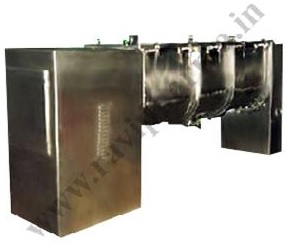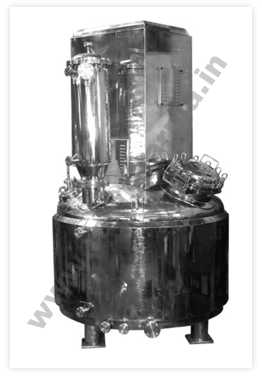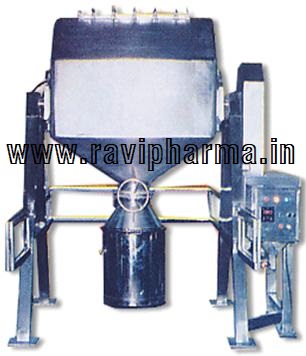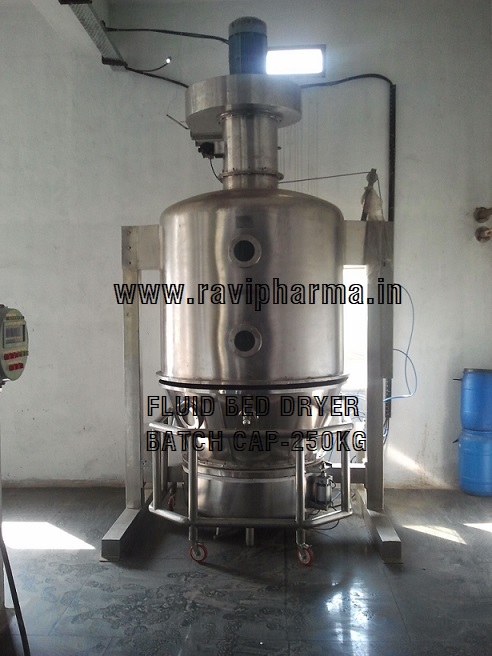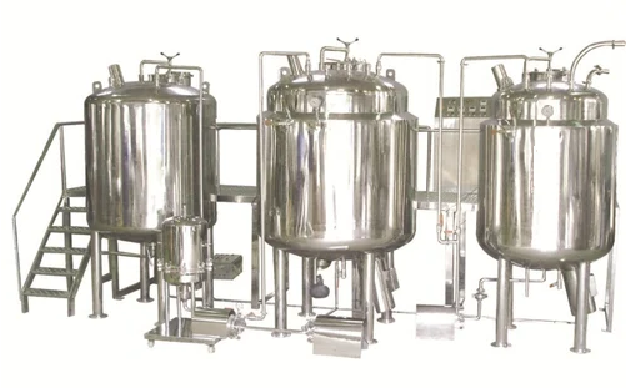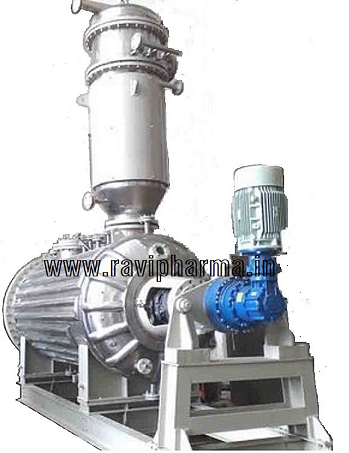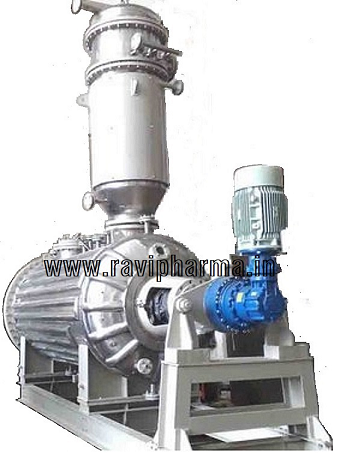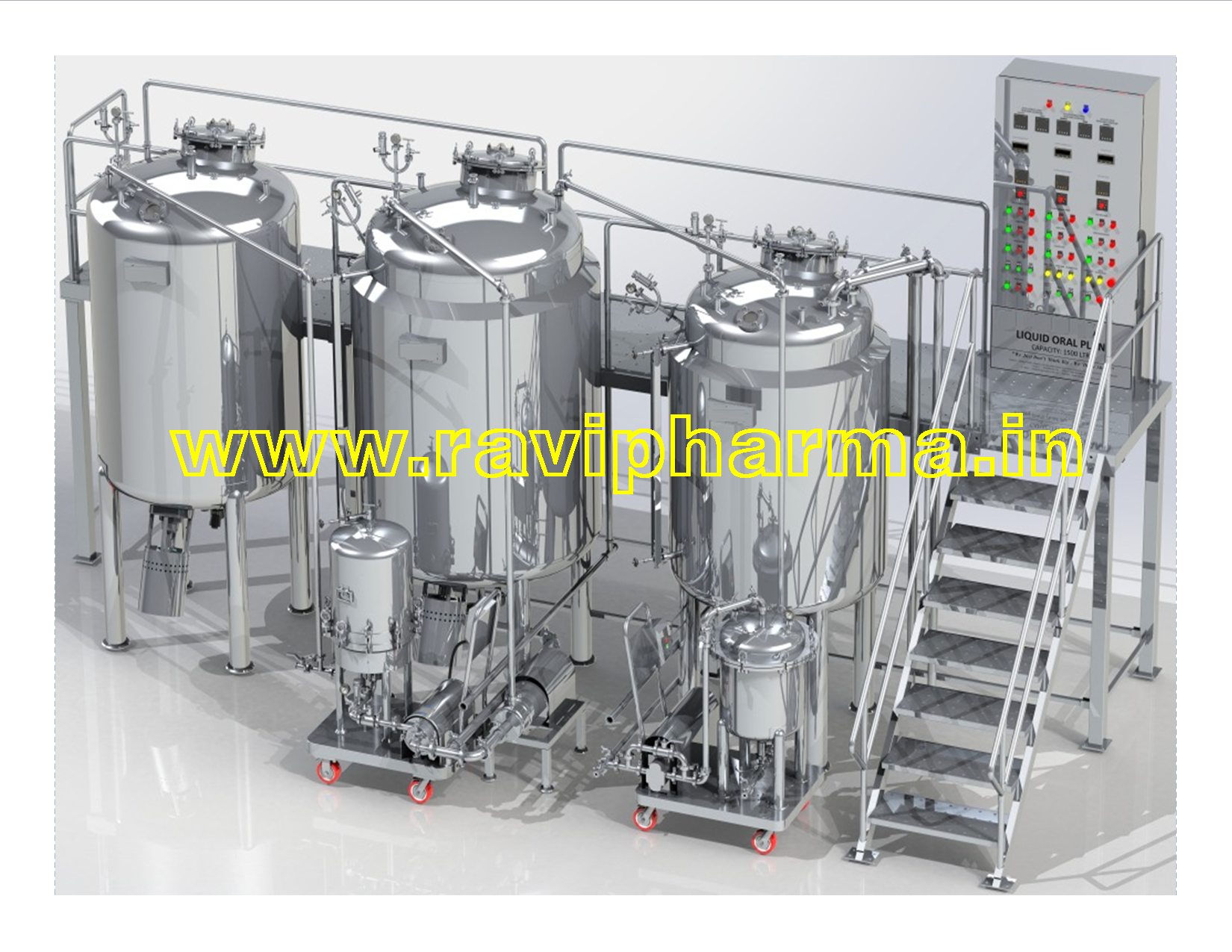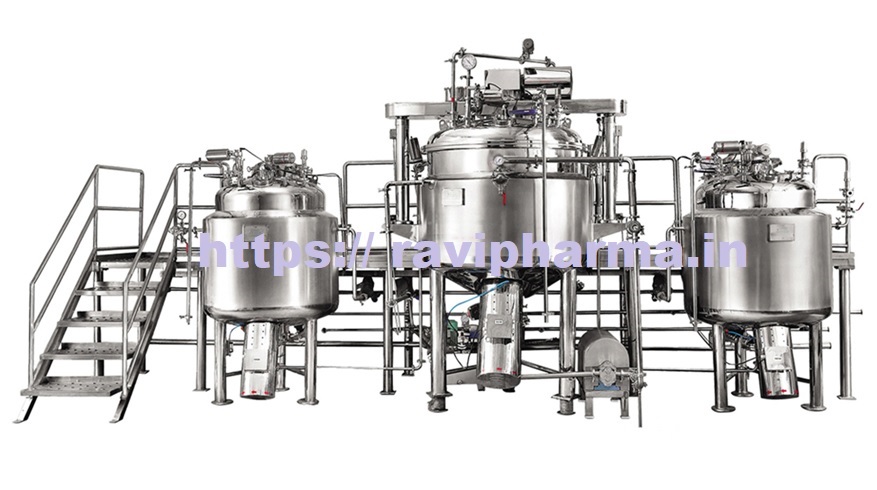
✅ 1. Plant Description – Automatic Liquid Syrup Oral manufacturing plant
An Automatic Liquid Syrup Oral Manufacturing Plant is designed to produce liquid formulations such as cough syrups, vitamin syrups, tonics, herbal extracts, and other oral liquids. The system integrates preparation, mixing, heating, filtration, filling, capping, labeling, and packaging with minimal manual intervention to ensure high efficiency, hygiene, and reproducibility.
✅ 2. Production Capacity – Automatic Liquid Syrup Oral manufacturing plant
Example capacities based on typical requirements:
- Small-scale: 500 – 2,000 liters per day
- Medium-scale: 5,000 – 20,000 liters per day
- Large-scale: 50,000+ liters per day
Capacity depends on:
- Type of syrup
- Batch size
- Filling speed
- Market demand
✅ 3. Key Sections of the Plant – Automatic Liquid Syrup Oral manufacturing plant
A. Raw Material Storage Area
- Active pharmaceutical ingredients (APIs), excipients, flavoring agents, sweeteners
- Storage under controlled conditions
- Material handling systems with proper segregation
B. Preparation Area
- Jacketed Mixing Vessel / Agitated Stainless Steel Vessel
– For dissolving powders, sugars, and adding ingredients
– Temperature control via steam or electric heaters - High-shear mixer / Homogenizer (if required for suspension or emulsions)
C. Filtration Section
- Pressure filters / Cartridge filters / Plate filters
– Remove particulates and ensure microbial load control
D. Storage Tanks
- SS316 tanks with agitation
- Intermediate bulk storage with nitrogen blanketing for sensitive products
E. Filling Section
- Automatic liquid filling machines
– Volumetric or piston-based filling
– Servo-driven for precise fill volume
– Can handle multiple bottle sizes
F. Capping & Sealing
- Automatic screw capping or induction sealing machines
- Torque-controlled caps for consistent sealing
G. Labeling & Packaging
- Automatic labeling systems with vision inspection
- Secondary packaging: carton packing, batch coding, etc.
H. Cleanroom / Controlled Area
- Hygienic environment
- HVAC with HEPA filtration
- Controlled temperature and humidity
✅ 4. Utilities Required
- Water for Injection (WFI) / Purified Water
- Steam for heating and sterilization
- Compressed Air
- Chilled Water for cooling
- Power Backup (DG sets / UPS systems)
- HVAC systems
✅ 5. Process Flow Diagram (PFD)
Raw Materials → Mixing Vessel → Heating & Agitation → Filtration → Storage Tank → Filling Machine → Capping → Labeling → Cartoning → Finished Goods
✅ 6. Quality Control (QC)
- In-process checks: viscosity, pH, solids content
- Microbial testing
- Stability studies
- Batch record documentation
- Equipment cleaning validation
✅ 7. Automation Features
- PLC-based control systems
- HMI interface for operator control
- Batch recipe management
- Alarms for temperature, pressure, and level deviations
- Data logging and SCADA integration for traceability
✅ 8. Regulatory Compliance
- GMP (Good Manufacturing Practice)
- WHO, USFDA, EMA, or local drug authority approvals
- Documentation: SOPs, batch records, equipment qualification (IQ/OQ/PQ)
✅ 9. Safety & Environmental Considerations
- Explosion-proof equipment (where required)
- Wastewater treatment
- Proper handling of chemicals
- Fire safety systems
✅ 10. Sample Equipment List
| Equipment | Material | Capacity | Remarks |
|---|---|---|---|
| Mixing Vessel | SS316 | 500 – 10000 L | Jacketed, insulated |
| Homogenizer | SS316 | 10000 L/h | High shear mixing |
| Filter Unit | SS316 | 10000 L/h | Cartridge / Plate |
| Filling Machine | SS316 | 100 – 10000 bottles/hour | Automatic |
| Capping Machine | SS316 | Inline | Torque control |
| Labeler | Stainless steel | 1000 bottles/hour | Vision inspection |
| PLC Control Panel | Industrial grade | — | Automation |
| WFI System | — | — | RO + UV treatment |
✅ 11. Documentation Package
- Plant layout drawing (2D & 3D)
- Equipment specification sheets
- Process flow diagrams (PFD, P&ID)
- SOPs for operation and cleaning
- Preventive maintenance schedules
- Validation protocols (IQ, OQ, PQ)
